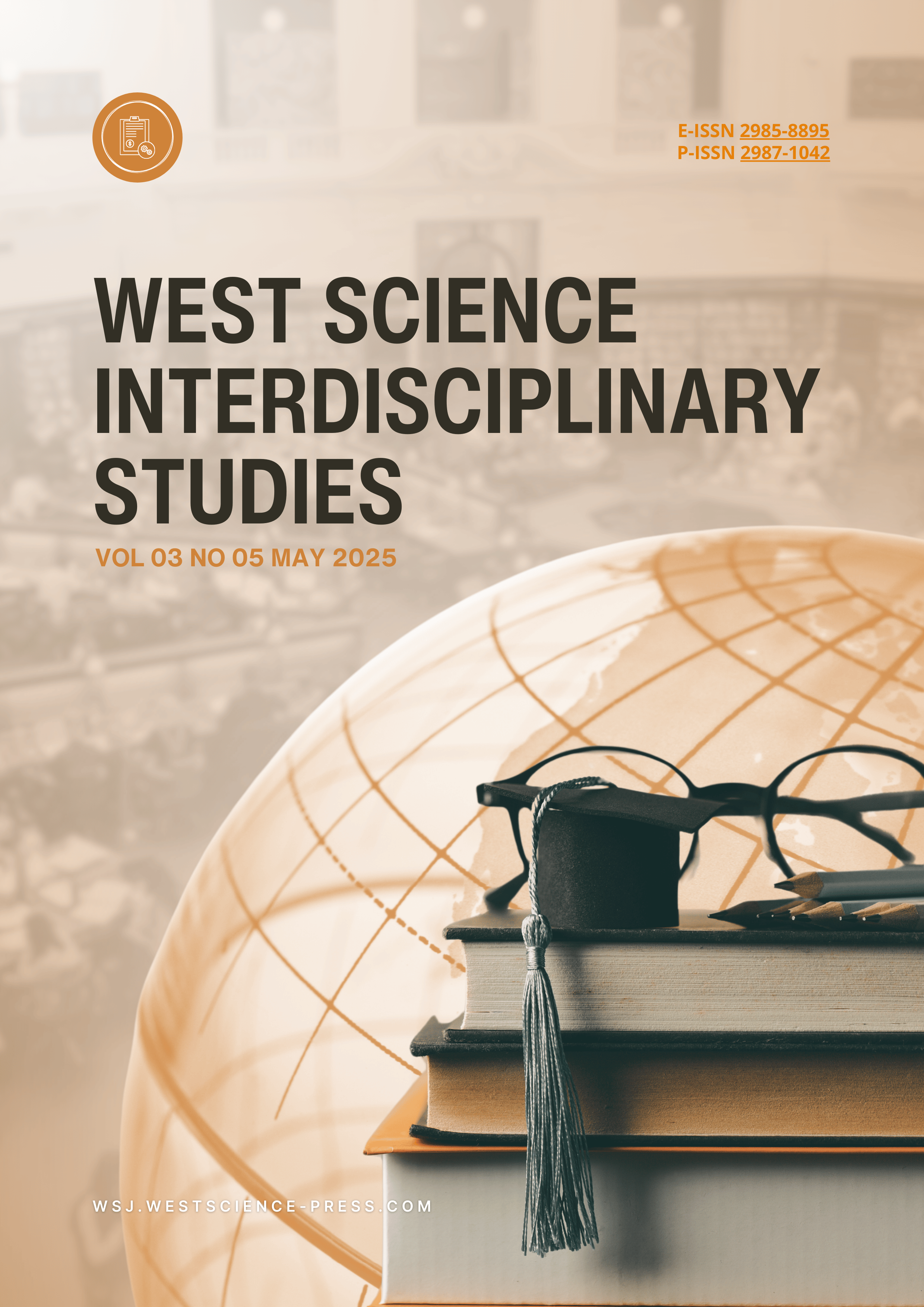A Bibliometric Review of Customer Experience-Based Financial Strategies
DOI:
https://doi.org/10.58812/wsis.v3i05.1911Keywords:
Customer Experience, Financial Strategies, Bibliometric Analysis, Digital TransformationAbstract
Customer experience (CX) has emerged as a critical component of strategic planning within the financial services industry, driving value creation through personalization, loyalty, and operational efficiency. This study conducts a bibliometric review to map the intellectual landscape of customer experience-based financial strategies using data extracted from the Scopus database and analyzed through VOSviewer. A total of 502 articles were evaluated using co-authorship, citation, keyword co-occurrence, and country collaboration analyses. The results reveal that central themes such as customer satisfaction, finance, and financial services form the conceptual core of the field, while recent trends emphasize digital transformation, fintech, and artificial intelligence. Prominent scholars and methodological influences shape the field’s theoretical base, with the United States and India identified as key contributors to global research collaboration. The study highlights the evolution of the domain from service quality models to AI-enabled customer engagement, and identifies opportunities for future research in cross-cultural contexts, empirical validation, and ethical dimensions of digital CX strategies.
References
[1] W. F. Van Raaij, “Explaining customer experience of digital financial advice,” Econ. World, vol. 5, no. 1, pp. 69–84, 2017.
[2] M. Bennett and A. Molisani, “Defining customer experience and measuring its impact on financial performance of US publicly traded companies,” 2020.
[3] A. Drotskie, “Customer experience as the strategic differentiator in retail banking.” Stellenbosch: University of Stellenbosch, 2009.
[4] M. Galib and S. Rijal, “Exploring Embedded Finance in Digital Marketing Impact on Marketing Strategy, User Experience and Customer Loyalty,” J. Adm. Bisnis, vol. 14, no. 1, pp. 27–38, 2025.
[5] S. Raina, H. Chahal, and K. Dutta, “Customer experience and its marketing outcomes in financial services: A multivariate approach,” Underst. role Bus. Anal. Some Appl., pp. 119–143, 2019.
[6] H. Chahal and K. Dutta, “Measurement and impact of customer experience in banking sector,” Decision, vol. 42, pp. 57–70, 2015.
[7] N. Donthu, S. Kumar, D. Mukherjee, N. Pandey, and W. M. Lim, “How to conduct a bibliometric analysis: An overview and guidelines,” J. Bus. Res., vol. 133, pp. 285–296, 2021.
[8] G. DeCandia et al., “Dynamo: Amazon’s highly available key-value store,” ACM SIGOPS Oper. Syst. Rev., vol. 41, no. 6, pp. 205–220, 2007.
[9] D. M. Szymanski and R. T. Hise, “E-satisfaction: an initial examination,” J. Retail., vol. 76, no. 3, pp. 309–322, 2000.
[10] T. A. Burnham, J. K. Frels, and V. Mahajan, “Consumer switching costs: A typology, antecedents, and consequences,” J. Acad. Mark. Sci., vol. 31, pp. 109–126, 2003.
[11] P. Gomber, R. J. Kauffman, C. Parker, and B. W. Weber, “On the fintech revolution: Interpreting the forces of innovation, disruption, and transformation in financial services,” J. Manag. Inf. Syst., vol. 35, no. 1, pp. 220–265, 2018.
[12] R. N. Bolton, P. K. Kannan, and M. D. Bramlett, “Implications of loyalty program membership and service experiences for customer retention and value,” J. Acad. Mark. Sci., vol. 28, no. 1, pp. 95–108, 2000.
[13] K. B. Hendricks, V. R. Singhal, and J. K. Stratman, “The impact of enterprise systems on corporate performance: A study of ERP, SCM, and CRM system implementations,” J. Oper. Manag., vol. 25, no. 1, pp. 65–82, 2007.
[14] C. Safran et al., “Toward a national framework for the secondary use of health data: an American Medical Informatics Association White Paper,” J. Am. Med. Informatics Assoc., vol. 14, no. 1, pp. 1–9, 2007.
[15] V. N. Lu et al., “Service robots, customers and service employees: what can we learn from the academic literature and where are the gaps?,” J. Serv. Theory Pract., vol. 30, no. 3, pp. 361–391, 2020.
[16] Q. Zhu, Y. Geng, T. Fujita, and S. Hashimoto, “Green supply chain management in leading manufacturers: Case studies in Japanese large companies,” Manag. Res. Rev., vol. 33, no. 4, pp. 380–392, 2010.
[17] H. Albayati, S. K. Kim, and J. J. Rho, “Accepting financial transactions using blockchain technology and cryptocurrency: A customer perspective approach,” Technol. Soc., vol. 62, p. 101320, 2020.
[18] A. Parasuraman, V. A. Zeithaml, and L. L. Berry, “Servqual: A multiple-item scale for measuring consumer perc,” J. Retail., vol. 64, no. 1, p. 12, 1988.
[19] J. Zolkiewski et al., “Strategic B2B customer experience management: the importance of outcomes-based measures,” J. Serv. Mark., vol. 31, no. 2, pp. 172–184, 2017.
[20] P. Klaus, Measuring customer experience: How to develop and execute the most profitable customer experience strategies. Springer, 2014.
[21] Л. Г. Прокопова, Г. С. Тимохина, С. В. Сухов, А. Б. Цветкова, and Б. И. Погориляк, “customer experience management for highly demanded services in the financial market in crisis,” Модернизация Инновации Развитие, vol. 13, no. 4, p. 627, 2022.
Downloads
Published
Issue
Section
License
Copyright (c) 2025 Loso Judijanto, Dila Padila Nurhasanah, Paramita Andiani

This work is licensed under a Creative Commons Attribution-ShareAlike 4.0 International License.
























 Instagram
Instagram 